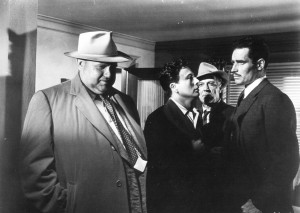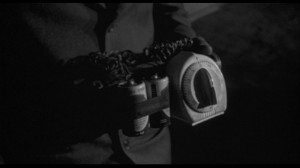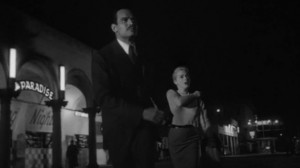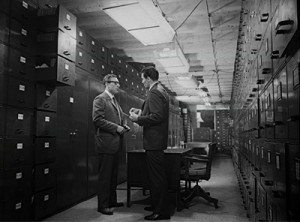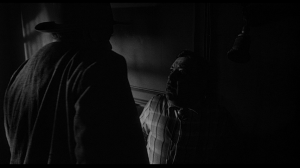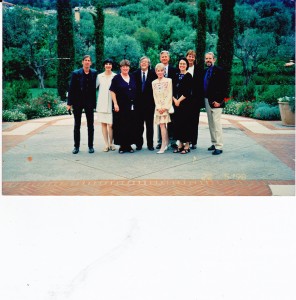Published as “Classic Touch” in the January 2002 issue of AMC: American Movie Classics Magazine….The last photo reproduced here is of the whole crew of the re-edit team at the Cannes Film Festival in May 1998. — J.R.
Considering all the rereleases in recent years of studio classics that are
labeled “director’s cut,” it must seem like every studio picture has one.
But the phrase is often a marketing term, and therefore potentially
misleading. There are some movies, including a few great ones, that can’t
be released in “director’s cuts” because the director was never accorded
final cut in the first place. At least five of Orson Welles’s European films
and three of his Hollywood features have director’s cuts, but Touch of
Evil (1958), his last Hollywood movie, isn’t one of them. (For the record,
his three director’s cuts are all in the 1940s: Citizen Kane and two
separate edits of his Macbeth.)
Admittedly, there was less studio interference on this noir thriller than
there had been on Welles’s The Magnificent Ambersons, The Stranger,
and The Lady from Shanghai. Welles was allowed to direct and rewrite
the script only after he’d been cast as the heavy, a crooked cop — mainly
through the intervention of lead actor Charlton Heston, who played an
honest Mexican cop.
Within the restrictions of time and budget set by Universal
Pictures, Welles was accorded an unusually free hand — at
least until the studio took a peek at the film he was editing
and found it confusing. Relations with the studio deteriorated,
especially after Welles was taken off the editing and not
allowed to shoot a few short extra scenes. When Welles finally
saw the studio edit, he drafted a 58-page memo suggesting
changes, but few were heeded at the time. After a 108-minute
version was previewed, a version 15 minutes shorter was
released, without even press screenings. I saw it as a teenager
in Florence, Alabama, where it was basically billed and received
as a routine thriller — what was known in the trade as a program
picture, meaning something like a time-filler in an era when
people tended to go to movies more than they went to particular
movies.
A few reviewers were impressed by the virtuoso camera movements and
long takes, as well as the daring depictions of racism, sex, drugs, and
violence. But the overall consensus was that this seedy, low-budget effort
was no Citizen Kane. (About 15 years later, Welles’s F for Fake was
labeled as no Touch of Evil, suggesting a certain amount of progress.)
In the mid-1970s, the 108-minute preview version was unearthed that
eventually went on to replace the shorter cut. About 20 years later, an
independent producer, Rick Schmidlin, got the idea of following
all of Welles’s editing suggestions (now available as a bonus on the
DVD of Touch of Evil) for the first time, hiring Walter Murch as
editor and myself as consultant. The idea wasn’t to “restore” a
director’s cut, because one can’t restore something that never
existed in the first place. We didn’t even think our version was
necessarily better than the others in every respect — and hoped
Universal would make all three versions available, something
it has so far chosen not to do. [2014 note: Universal has
subsequently made all three versions available, both on DVD
and on Blu-Ray.] We regarded the re-edit mainly as an
experiment — to see what would happen if Welles’s suggestions
were followed, all of them intended to patch up the studio’s
version of Touch of Evil. We’ll never know what his own ideal
version would have been, and if were still alive he probably
wouldn’t either — because he was a director who sought to
surprise himself as well as his audience, improvising as he went.

